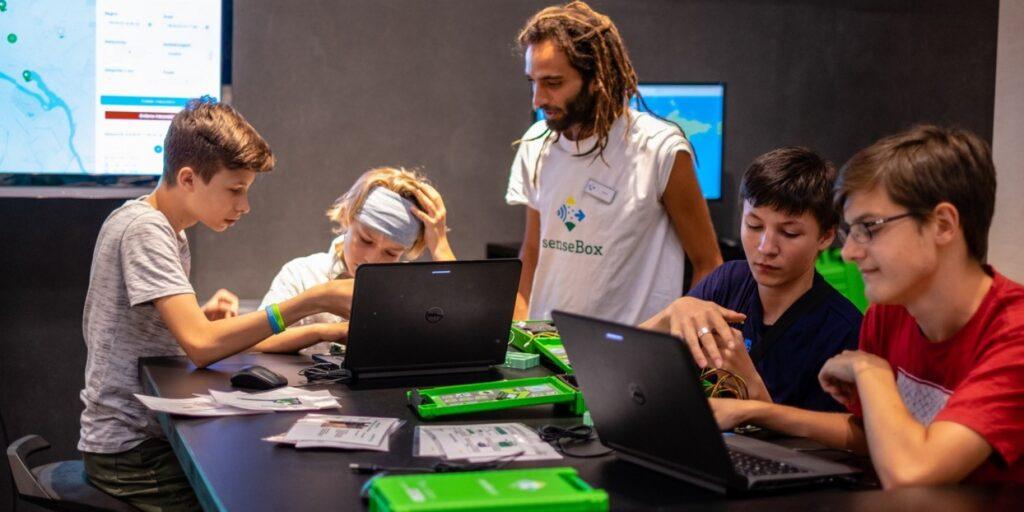The senseBox is a toolkit for digital education, citizen science, and environmental monitoring, jointly developed by start-up re:edu and the Institute of Geoinformatics at the University of Münster. Developed specifically for the education sector, the senseBox:edu was designed with educational needs in mind.

Alongside the hardware, the graphical programming interface ‘Blockly for senseBox’ (), as well as teaching and learning materials () and projects () are freely available as Open Educational Resources (OER). The senseBox can also be programmed in CircuitPython!

The senseBox:edu S2 is the latest addition to the senseBox family, specifically designed for educational institutions that seek to provide students with hands-on programming insights and bridge the gap between environmental and technological domains. The SenseBox:edu S2 offers a plethora of innovative features.
The new MCU S2 microcontroller integrates numerous components directly onto the board, including an RGB LED, light sensor, Bluetooth module for use with the Phyphox app, 3-axis accelerometer and gyroscope, voltage regulator for reliable power supply, Wi-Fi, and a microSD card module for data storage. Furthermore, this device features a faster processor with more memory and Qwiic-compatible ports. Additionally, the senseBox:edu S2 features new sensors: Besides a LED matrix for color representation and concept transmission (e.g., binary code display). The array features a Time-of-Flight (ToF) sensor that accurately measures distances and generates a simple 8×8 pixel image.

One key characteristic is the inclusion of ESP Now for direct communication between multiple S2 microcontrollers.
Neugierig geworden? You can find further information about the senseBox:edu S2 at

